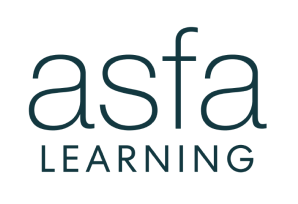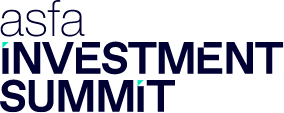Every Australian should be grateful for our world class retirement system. It is the fourth largest in the world by assets (Melbourne Mercer Global Pension Index 2017) – a remarkable achievement for a country that ranks 53rd by population size (World Population Prospects 2017, United Nations). We truly are the lucky country and have benefited from three unshakeable retirement pillars:
- compulsory contributions to superannuation
- our cultural obsession with owning a home
- a generous age pension safety net.
Our retirement system was designed in the 1980s and is therefore heavily influenced by the cultural, social and political context that existed in that era. Things have changed, among them:
- life expectancy has increased substantially
- forecast asset returns remain depressed at historically low levels
- home ownership rates are falling dramatically for younger workers
- our workforce mix is changing from predominantly full-time to part-time
- our economic activity mix has changed from blue-collar resources to white-collar services.
All of this points to a hard truth:
The pillars that have built our world-class retirement system won’t be able to sustain it long-term.
To understand why, we first need to explore how the concept of retirement itself came to be.
A brief history of retirement
The clichéd Aussie dream of retiring at 60 with a two storey home, a white picket fence and many years ahead of P&O Fairstar cruises is burned into our collective consciousness. However, turn the dial back a century and the concept of retirement didn’t even exist. Why? We didn’t live long enough!
Working life prior to World War I was hard yakka and mostly done by men. Men would work their entire adult lives with no real expectation of this ending before their final days. As their husbands passed away, women had no realistic way of maintaining their income levels or living standard. It was a catch-22 that meant no realistic prospect of a comfortable retirement for anyone.
The war economy of the 30s and 40s brought women into the workforce at the same time that great leaps forward in modern medicine and industrial development increased life expectancies and provided opportunities for less labour-intensive jobs. Ta da – the dream of retirement was born!
Making superannuation great again
As society evolves and member expectations change, superannuation funds will naturally expand the scope of their services and broaden their value proposition. The biggest competitive advantage they can leverage is trust. Time and again, in survey after survey, superannuation funds have come out on top as the provider from which customers are most comfortable with seeking advice (2016 Member Sentiment and Communications report, Investment Trends); more than their bank, broker, insurer, accountant or financial adviser.
At the same time, government support for our retirement system will likely diminish over time. Expect less concessional tax treatments for superannuation and pension investments and an ever-tightening means testing of aged pension welfare entitlements. This will be the only way future governments will cope with the forecast decline in the number of tax-paying workers supporting age pensioners from 4.5 to 2.7 by 2050 (2015 Intergeneration Report, The Department of Treasury).
Superannuation funds will need to pick up this slack, capitalise on the inherent trust placed in them by members and take on a much more comprehensive role in our retirement system. But how?
Some ways funds may be able to do this is by:
Formulating a comprehensive retirement strategy: if they weren’t thinking about this already, soon trustees will be obliged (by a new covenant in the Superannuation Industry (Supervision) Act 1993 (SIS)) to formulate a strategy to ensure an adequate retirement for their members and offer a Comprehensive Income Product for Retirement (CIPR). It won’t be enough for funds to just offer an account based pension and an annuity. Funds should think bigger – offering workforce re-entry and re-skilling programs; partnering with third party health and care providers to keep retirees in their homes for longer; and finally providing subsidised placements into aged care homes when the time is right.
Managing accelerating liquidity and sequencing risk: today funds have a much greater proportion of accumulation members than deccumulation members. This means that funds generally have more money coming in (contributions) than going out (pension payments). Their biggest problem is finding the right place to invest that growing pool of money over the long term. Very soon though, liquidity and sequencing risk will take on a new and much more important dimension as most funds move into a net outflow position. As billions and billions of pension payments are paid out, funds will need to ensure they are providing cost-effective downside protection, more closely matching their asset allocation with their liability profiles and providing goals-based investment strategies to their members.
Personalising member engagement through technology: there is a theory at the heart of much of the technology innovation currently occurring within superannuation funds – you can make members care about their super by tailoring their experience down to an individual level. This theory may be correct but there is a long way to go until we reach truly personalised experiences, and funds will need to be careful not to cross the creepy threshold (as Facebook has found out). However, if funds are able to truly understand member preferences and characteristics they can offer a unique and tailored service model. Embedding behavioural science techniques through technology will be the key. From machine learning to real-time payments to voice-enabled digital advice, a whole new fund-to-member dynamic will be created.
Responding to changing demographics and member needs: retirement as we know it won’t be around forever. People are living longer healthier lives and having more diverse careers. Retirement ages will increase naturally but also people will exit the workforce less suddenly. Watch for the emergence of retirement gap years where older workers take a year off to travel the world and re-enter the workforce in less demanding or less senior roles. Furthermore, as governments tinker more and more with the rules around superannuation, retirees will seek to diversify their sources of retirement income with other tax effective savings vehicles like investment bonds. The family home will remain a great source of security and wealth for retirees but expect more focus on unlocking this wealth to generate a source of retirement income. The government has even signalled in the 2018-19 Federal Budget their intention to rapidly expand the Pension Home Loan Scheme – and this is just the tip of the iceberg.
Australia needs to continuously evolve its retirement system to stay at the head of the global pack. Superannuation funds need to be both outwardly and inwardly looking – learning lessons from overseas markets and keeping close to their members’ needs. If we get it right, we will have a broader and more inclusive system which combines the best of retirement from around the world.








